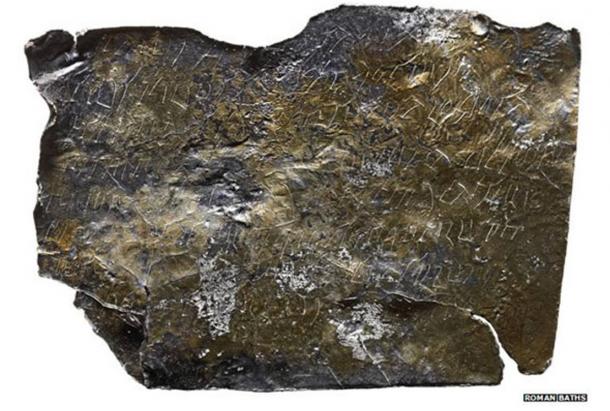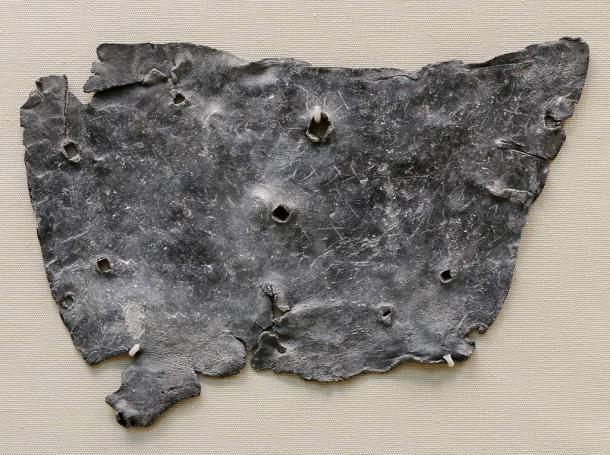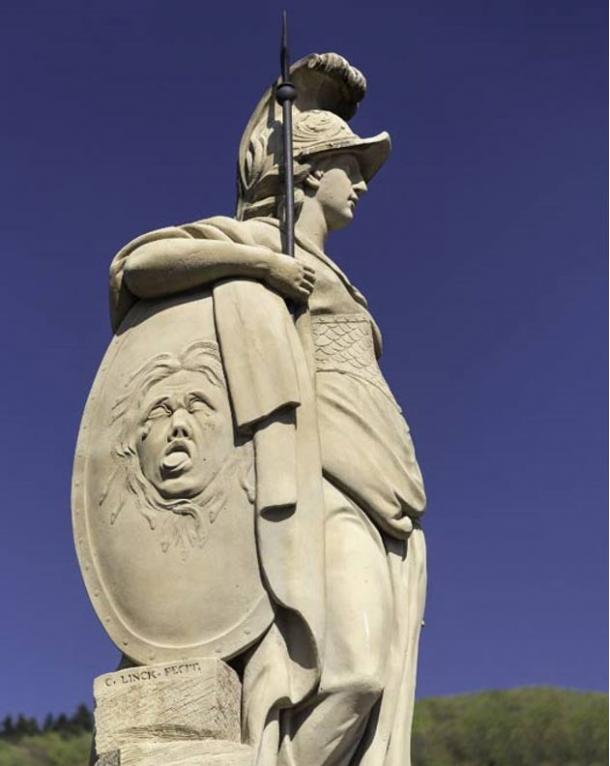Although the ancient Romans were the first people to have had a fire brigade, they did not have a police force (apart from a night-watch). Thus, victims of minor crimes such as petty theft had to fend for themselves and seek retribution by their own means. The most common way of doing so was by calling on the gods to punish the thief with a curse tablet.
Curse tablets have been found in various parts of the Roman world, and were usually inscribed with a stylus on lead tablets. Other materials, such as wood, papyri and stone, were also used. Nevertheless, lead has been quite a popular material due to its symbolic qualities, i.e. its heaviness, coldness and colour, which are especially efficacious for the purpose of cursing. The tablets themselves were sometimes cut from hammered or thinly-cast sheets, and then trimmed to produce a flat even rectangular tablets. Archaeologists have also discovered curse tablets that are irregular in shape, including human figures and even racehorses in one instance, made specifically to represent the targets of the curse.

A Roman curse tablet. Credit: Roman Baths
Roman baths were often the favourite haunts of thieves. When people went to the public baths, they had to leave their belongings in a storage nook. These were easy pickings for thieves, as the storage nooks probably did not offer much security. Some hired bathhouse slaves or brought their own slaves to watch over their belongings. Nevertheless, these watchers would sometimes fall asleep or could be bribed by would-be thieves. Without a police force to report a theft, a victim may call upon the gods to avenge them.
MORE
A curse would be inscribed on a lead tablet, and either cast into the hot springs or nailed on the walls of the bath. At Bath, in the UK, for instance, 130 curse tablets were addressed to the goddess Sulis Minerva, many of them seem to invoke punishments that are disproportionate to the crimes committed. The wishing of ill-health and death on a person is typical of many Roman curses. For example, the text inscribed on one tablet reads:
“Docimedis has lost two gloves and asks that the thief responsible should lose their minds and eyes in the goddess’ temple.”
Some of the reveal the intensity of the victim’s anger:
..so long as someone, whether slave or free, keeps silent or knows anything about it, he may be accursed in (his) blood, and eyes and every limb and even have all (his) intestines quite eaten away if he has stolen the ring or been privy (to the theft).

Curse Tablet found in London. Inscription reads: “I curse Tretia Maria and her life and mind and memory and liver and lungs mixed up together, and her words, thoughts and memory; thus may she be unable to speak what things are concealed, nor be able.” ( Wikimedia Commons )
The Goddess Sulis Minerva was the Roman goddess of wisdom, healing, the arts, strategy and magic. Celts worshiped Sulis, who was a sun god of fertility at the thermal spring of Bath -named Aquae Sulis in Latin. The two goddesses were gradually rolled into one so that British Romans came to worship Sulis Minerva. The lead tablets suggest that Sulis Minerva was life-giving but also adept at punishing wrong-doers as a goddess of justice.

Statue of the goddess Minerva in Old Town, Heidelberg, Germany. Source: BigStockPhoto
The thermal spring baths, known as Aquae Sulis in Latin, was a religious site before the Romans arrived and the springs at bath are believed to have been used for more than 10,000 years. The Celts are thought to have built the first shrine there in 700BC, but it was the Romans who adorned the site with grand temples, altars and bath buildings complete with lead pipes to ensure a constant flow of water to the giant lead-lined pool.

Aquae Sulis in Bath, England. Source: BigStockPhoto
Not all Roman curse tablets were directed at thieves at public baths, however, and numerous curse tablets have been found targeting other individuals. In the ancient city of Amathus on Cyprus, for example, a curse tablet was found in 2008 bearing this inscription: “May your penis hurt when you make love.” In addition to the curse, archaeologists have observed that there was a figure of a man holding something in his right hand that looks like an hourglass. As the tablet dates to the 7 th century A.D. (a period when Christianity was already well-established on the island), it has been suggested that this is a demonstration of the survival of pagan practices into the Christian era. Apart from that, not much else is known about this mysterious tablet. Who made it? Who was being cursed? Why was it made? We can only speculate with our imagination.
Through the Roman curse tablets, we are able to gain an insight about the ritual practices of the common people in the Roman world when their quest for justice could not be accomplished via human agency. The curse tablets also help us understand the way societies under Roman rule viewed themselves. This is made possible by studying the language used on the tablets. One of the curse tablets in Bath, for instance, is written in British Celtic, a language used prior to the Roman conquest of Britain. Whilst other curse tablets found in the UK are written in Latin, it is a Latin peculiar and unique to this region of the Roman world, demonstrating the way a foreign language may be adapted to suit local needs. Another example of the localization of curse tablets can be found in Jerusalem. This tablet invokes six gods, four of whom are Greek, one Babylonian and the last one Gnostic. In addition, the text contains magical words of Hebrew / Jewish origin.





